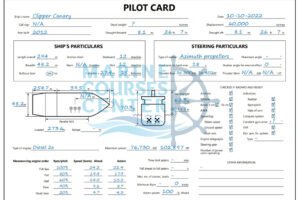
CHECKS TO BE MADE ON A LIFEBOAT: Ensuring Safety at Sea

CHECKS TO BE MADE ON A LIFEBOAT
Table of Contents
CHECKS TO BE MADE ON A LIFEBOAT: Ensuring Safety at Sea
Checking the physical condition of a lifeboat, its equipment, sprinkler, air supply, power supply, maneuvering system, engine and propulsion system, release gear, cables, and bailing system is essential to ensure safety at sea.
Lifeboats are a critical safety feature for any vessel, be it a large cruise ship or a small fishing boat. They serve as the last resort when things go wrong and can make the difference between life and death. Therefore, ensuring the proper functioning and condition of a lifeboat is of utmost importance. This article discusses the ten checks that need to be made on a lifeboat to ensure its readiness for an emergency situation.
I. Physical condition of lifeboat (fixed as well as loose equipment)
The physical condition of a lifeboat is crucial for its proper functioning. The following checks need to be made:
Check for any cracks or damages to the hull, deck, or cabin.
Ensure that all fittings, rails, and other fixed equipment are in good condition.
Check the condition of loose equipment such as paddles, oars, anchor, ropes, and rescue equipment. Make sure they are in good working condition and properly stowed.
II. Lifeboat equipment
The lifeboat equipment must be checked to ensure it is readily available and in good condition. The following checks need to be made:
Ensure that the lifeboat is properly equipped with the required number of life jackets, immersion suits, and other personal protective equipment.
Check the condition of the lifeboat’s first aid kit, distress flares, and signaling devices.
Verify that the emergency rations and water supplies are sufficient and not expired.
III. LIFEBOAT Sprinkler system
The sprinkler system is an essential safety feature that needs to be checked. The following checks need to be made:
Check that the sprinkler system is in good condition and properly connected to the water supply.
Verify that the sprinkler nozzles are not clogged or damaged.
Test the sprinkler system to ensure it functions correctly.
IV. LIFEBOAT Air supply system
The air supply system in a lifeboat is critical for survival. The following checks need to be made:
Check the condition of the air supply system, including the air cylinders, pressure gauges, and hoses.
Verify that the air supply system is properly connected to the lifeboat’s breathing apparatus.
Test the air supply system to ensure it functions correctly.
V. LIFEBOAT Power supply system
The power supply system is crucial for the lifeboat’s proper functioning. The following checks need to be made:
Check the condition of the battery, charging system, and wiring.
Verify that the battery is fully charged and capable of providing power to the lifeboat’s equipment.
Test the power supply system to ensure it functions correctly.
VI. LIFEBOAT Maneuvering system
The maneuvering system is essential for controlling the lifeboat in an emergency situation. The following checks need to be made:
Check the condition of the steering gear, rudder, and propeller.
Verify that the steering system is properly connected to the helm and functioning correctly.
Test the maneuvering system to ensure it functions correctly.
VII. LIFEBOAT Engine and propulsion system
The engine and propulsion system are critical for the lifeboat’s ability to move. The following checks need to be made:
Check the condition of the engine, fuel system, and transmission.
Verify that the engine starts and runs smoothly.
Test the propulsion system to ensure it functions correctly.
VIII. LIFEBOAT Check operation of devices used for activating release gear
The devices used for activating the release gear are critical for launching the lifeboat. The following checks need to be performed to ensure the devices are in good working condition:
1- Release mechanism: Check the release mechanism of the lifeboat. Make sure the release mechanism is well lubricated, free from corrosion and rust, and that it operates smoothly. The release mechanism should be capable of being operated manually and automatically.
2- Release gear: Inspect the release gear for any visible signs of damage, including cracks or deformation. Check that the pins and hooks are in place and that they are securely fastened. Make sure that the release gear is properly aligned with the hooks.
3- Davit system: Inspect the davit system for any visible signs of damage. Make sure that the winches and cables are in good condition and properly lubricated. Check that the davits are free from any obstruction that could prevent the lifeboat from launching smoothly.
4- Gravity davit system: If the lifeboat is equipped with a gravity davit system, check that the brake is properly adjusted and functioning correctly. Make sure that the brake is capable of holding the lifeboat in place during launching and recovery operations.
5- Hydrostatic release unit: If the lifeboat is equipped with a hydrostatic release unit, check that the unit is properly installed and that the water pressure is within the recommended range. Make sure that the hydrostatic release unit is in good working condition and that it will activate the release gear when submerged.
6- Electrical release system: If the lifeboat is equipped with an electrical release system, check that the battery is fully charged and that the wiring is properly installed and free from any damage. Make sure that the electrical release system is properly tested and that it will activate the release gear when needed.
By checking the operation of devices used for activating release gear, you can ensure that the lifeboat can be launched safely and efficiently in an emergency situation.
FAQs:
Q. What should be done if any damage is found during the checks on the release gear?
A. If any damage is found during the checks, the release gear should be immediately replaced or repaired before the lifeboat is launched.
Q. Can the release gear be operated manually and automatically?
A. Yes, the release gear should be capable of being operated manually and automatically.
Conclusion:
The devices used for activating the release gear play a crucial role in launching the lifeboat safely and efficiently. By performing regular checks on the release mechanism, release gear, davit system, gravity davit system, hydrostatic release unit, and electrical release system, you can ensure that the lifeboat is ready for use in an emergency situation. Always make sure to replace or repair any damaged components before launching the lifeboat.
Leave A Reply
You must be logged in to post a comment.




1 Comment